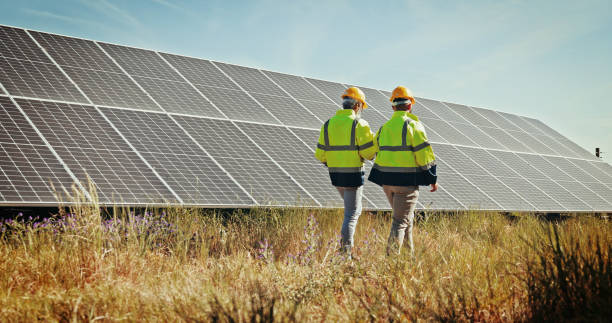Driving Innovation in Renewable Energy

Q1. Could you start by giving us a brief overview of your professional journey, particularly focusing on your expertise in renewable energy design, engineering, and project execution?
With a bachelor's degree in Electrical Engineering and a master's in Applied Electronics, I began my career in the design, engineering, and execution of mid-scale thermal power plants, where I worked for about seven years. I transitioned to renewable energy projects in 2009 with the launch of the National Solar Mission, and since then, I have been involved in the design, engineering, optimization, and execution of renewable energy projects (solar, wind, and hybrid) with leading IPPs and EPCs in India, such as SunEdison, Siemens Gamesa, and Ayana Renewable Power, across projects of various scales. I am currently working with Enphase, focusing on the engineering of residential solar projects for the US.
Q2. With renewable energy projects expanding globally, what are the key challenges and considerations when executing projects in different regulatory and grid environments?
With most of my experience in the design, engineering, and execution of large-scale solar and wind projects, I have observed the following key challenges faced by developers:
- Frequent policy changes
- Grid integration and availability of evacuation infrastructure, along with associated delays
- Supply chain issues, including unexpected changes in solar module pricing and a scarcity of wind turbine manufacturers
- Land availability and the acquisition process, which are not standardized and vary from one state to another
Q3. How are emerging technologies like AI, digital twins, and advanced materials shaping the design, performance, and operational efficiency of solar and wind projects?
After 2015, most developers in India recognized the importance of innovation and technology to optimize cost and time during the bidding, execution, and operation and maintenance phases. Typical use cases include:
- Use of drones and AI for construction monitoring, land topographical analysis, and performance improvement
- Transformer monitoring and failure forecasting systems
- Digital twins to enhance the monitoring of solar plants and improve performance
Q4. Energy storage adoption is increasing alongside solar and wind. How do you see storage and smart inverter technologies impacting the reliability and scalability of renewable projects?
Storage and smart inverter technologies are increasingly being mandated by policymakers for large-scale renewable projects, taking into account factors such as grid stability, reliability, peak shaving, and load shifting. Almost all projects from central nodal agencies in India now require storage.
Q5. Which segments within solar and wind energy do you see growing the fastest, and what are the key factors driving their growth?
Standalone solar and wind projects will gradually phase out of the market, while hybrid and round-the-clock power projects with storage systems such as batteries and pumped storage will take a major share of the market in the coming years.
Q6. With investors and regulators emphasizing ESG compliance, what operational and engineering practices are critical to ensuring projects are both sustainable and community-friendly?
Having worked with both multinational and Indian developers adhering to strict ESG guidelines, my experience is that ESG-compliant operational and engineering practices enable projects to be sustainable and community-friendly. This is crucial for the successful operation and maintenance of renewable energy projects throughout their 25-year lifecycle. Non-compliance with ESG standards can lead to issues that hamper plant operations.
Q7. If you were an investor evaluating companies in the renewable energy space, particularly in solar and wind, what key questions would you pose to senior management to understand their long-term competitive advantage?
- Design Basis of the Plant
- ESG Compliance Report
- Compliance with the Land Acquisition policies of the State
- Technology adopted
- Operation & Maintenance philosophy (Automated/Semi-Automated/Manual)
- Make & Credentials of Key component manufacturers like PV modules, Wind Turbine, Transformers, etc.,
Comments
No comments yet. Be the first to comment!
